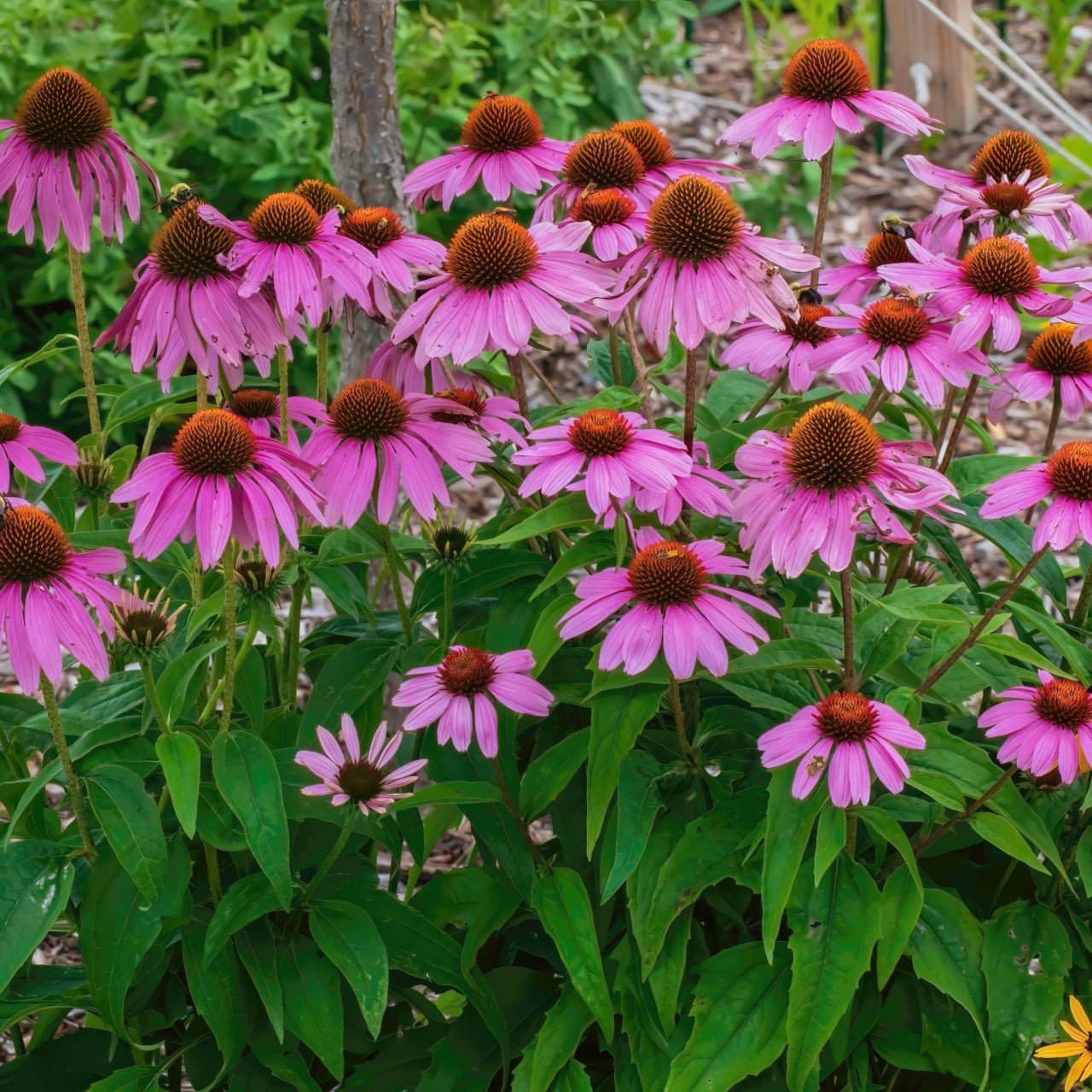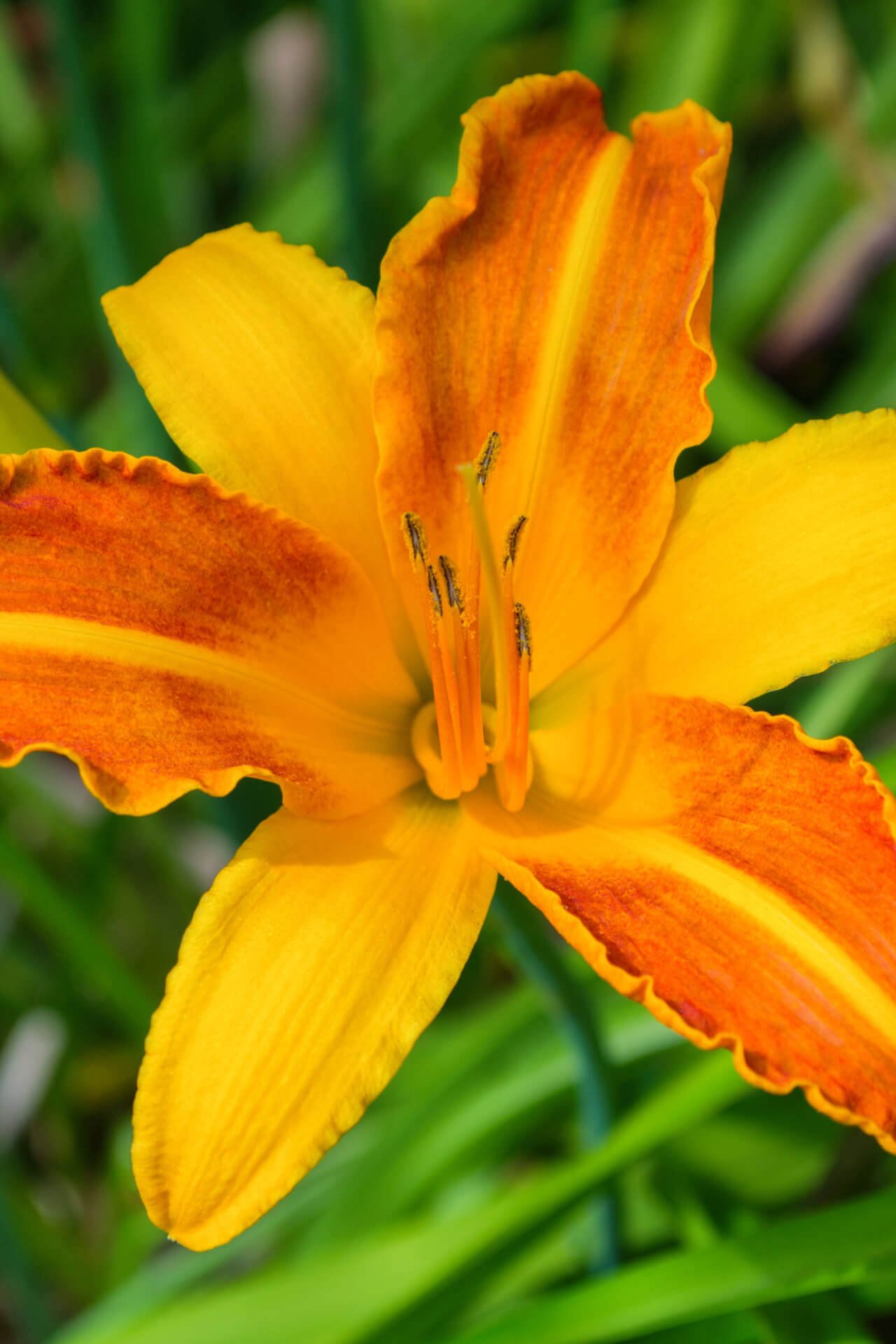Creating a vibrant and enduring garden is a dream for many gardening enthusiasts. Perennial plants play a vital role in achieving this vision. Unlike annuals that require replanting yearly, perennials return year after year, bringing beauty and continuity to your outdoor space. In this article, we'll explore the top 10 best perennial plants that are visually appealing and low-maintenance, making them ideal choices for any garden.
Lavender (Lavandula spp.) Lavender is a timeless favorite in perennial gardening due to its captivating fragrance and delicate flowers. With various species and cultivars available, you can choose from different colors, sizes, and growth habits. Lavender is well-suited for sunny, well-drained areas and requires minimal maintenance once established. Pruning after flowering and occasional watering is usually sufficient to keep this plant thriving.
Coneflowers (Echinacea spp.) Coneflowers are prized for their striking daisy-like flowers in various shades, from classic pink to vibrant orange. Regular deadheading will encourage continuous blooming, and dividing the plants every few years will help maintain their vigor.
Daylilies (Hemerocallis spp.) Daylilies are known for their versatility, offering an array of flower colors and patterns. They are well-suited for various soil types and can tolerate sun and light shade. Their name stems from each flower's short lifespan, but they produce numerous blooms over an extended period. Regular removal of spent blooms and occasional division of clumps will ensure a healthy display year after year.
Hosta's (Hosta spp.) Hosta's are cherished for their lush foliage, making them excellent choices for shady spots in the garden. These plants are relatively low-maintenance, requiring consistent watering and occasional division to prevent overcrowding.
Russian Sage (Perovskia atriplicifolia) is a drought-tolerant perennial that adds an airy, lavender-blue hue to your garden. Its aromatic foliage and spiky flowers create a sense of movement, even on the calmest days. Russian Sage thrives in well-drained soil and full sun, making it an ideal option for hot and dry climates. Black-eyed Susan (Rudbeckia spp.) Black-eyed Susan's are classic perennials with golden-yellow petals and dark centers. They bloom from summer to fall, attracting bees and butterflies. These sturdy plants are adaptable to various soil conditions and are relatively easy to grow. Regular deadheading and division every few years will help maintain their vitality.
Sedum (Sedum spp.) Sedums, or stonecrops, are drought-tolerant perennials in various sizes and colors. Their succulent leaves and star-shaped flowers add unique textures to the garden. Sedums thrive in well-draining soil and full sun, requiring minimal maintenance beyond occasional deadheading and dividing.
Peonies (Paeonia spp.) Peonies are beloved for their large, lush blooms and enchanting fragrance. They come in various colors and forms, from single to double flowers. While they can take a few years to establish, their longevity makes them worthwhile. Peonies prefer full sun to light shade. Supporting their heavy blooms with stakes and proper spacing will help prevent flopping.
Salvia (Salvia spp.) Salvias encompass a diverse group of perennials known for their spiky flower clusters and vibrant colors. These plants attract hummingbirds and pollinators, adding life to your garden. Depending on the species, Salvias can thrive in full sun to partial shade. Regular deadheading and occasional pruning will promote continuous blooming.
Astilbe (Astilbe spp.) Astilbes are prized for their feathery plumes that rise above fern-like foliage. They thrive in shaded to partially shaded areas and prefer moist, well-drained soil. Astilbes come in various colors, including pink, white, and red, adding elegance to woodland gardens or shady borders. Regular watering and dividing every few years will maintain their vitality.
Incorporating perennial plants into your garden design offers many benefits, from year-round beauty to reduced maintenance efforts
The ten best perennial plants mentioned above provide an array of colors, textures, and forms, allowing you to create a diverse and captivating landscape. By selecting plants well-suited to your climate, soil conditions, and sunlight availability, you can enjoy a stunning and enduring garden that brings joy and tranquility for years to come. Remember that while these perennials are generally low-maintenance, some care, such as watering, occasional pruning, and dividing, is essential to keep them thriving and looking their best.
Creating a stunning and enduring landscape requires careful consideration of plant selection, and perennials play a pivotal role in achieving this goal. Their ability to return year after year with vibrant colors, captivating textures, and varied forms makes them indispensable components of any well-designed landscape. After thoroughly examining numerous options, a selection of the best perennials for landscaping emerges as the cornerstone of a successful and breathtaking outdoor environment.
One of the standout perennials that consistently earns its place in landscapes is the elegant Daylily (Hemerocallis spp.). With an array of colors ranging from fiery reds to soft yellows, Daylilies bring unmatched diversity and adaptability. These perennials require minimal maintenance, thriving in various soil conditions and light levels. Their ability to tolerate drought further elevates their appeal, making them a reliable choice for novice and experienced gardeners.
For adding height and drama to the landscape, the majestic Russian Sage (Perovskia atriplicifolia) emerges as a top contender. Its wispy, silver-gray foliage and delicate lavender-blue flowers create an ethereal aura in any setting. Russian Sage is drought-tolerant once established, making it a valuable addition to water-wise landscapes. Its ability to attract pollinators adds ecological value to its aesthetic allure.
In the realm of ground cover perennials, the versatile Creeping Jenny (Lysimachia nummularia) stands out for its radiant chartreuse foliage. Whether cascading over retaining walls or weaving between stepping stones, its low-growing and spreading habit brings a touch of brightness to shaded areas. Creeping Jenny thrives in moist conditions, making it a fantastic option for areas that require erosion control.
The enchanting Coneflower (Echinacea spp.) captures attention with its distinctive daisy-like blooms and robust stature. Besides their striking appearance, Coneflowers are celebrated for their wildlife-attracting qualities, drawing in butterflies and birds. These perennials boast a long flowering period, extending from summer to fall, ensuring the garden's continuous display of color and life.
Peony (Paeonia spp.) is a timeless perennial that evokes a sense of nostalgia. Its large, abundant blooms and captivating fragrance make it a favorite amongst garden enthusiasts. With various hues available, from pure whites to rich reds, Peonies lend themselves to multiple design themes and aesthetics. Although they may require patience due to their slower growth, the reward of their breathtaking blooms is well worth the wait.
The ornamental Grasses take center stage when aiming to infuse the landscape with a dash of whimsy and grace. Varieties like Feather Reed Grass (Calamagrostis spp.) and Fountain Grass (Pennisetum spp.) sway gently in the breeze, introducing movement and texture to the scenery. These perennials are particularly effective when used as focal points or to create natural screens, adding dimension and intrigue to the landscape.
In conclusion, selecting perennials for landscaping should be driven by carefully considering color, texture, height, and maintenance requirements.
The perennials above – Daylilies, Russian Sage, Creeping Jenny, Coneflowers, Peonies, and ornamental Grasses – collectively present an exceptional palette to paint a breathtaking outdoor masterpiece. By blending these diverse perennials within the landscape, one can create a harmonious blend of colors, forms, and functionalities that will stand the test of time. With their ability to thrive year after year and offer evolving beauty, these perennials are undeniably the backbone of a successful and enduring landscape design.
Read more

Filled with some vitamins and minerals, blackberries provide a delicious treat eaten raw or incorporated into a wide selection of recipes. Blackberries contain vitamins A, C, and E and select B vit...

Lonicera japonica, Halls Honeysuckle VineThere are mainly two types of Halls honeysuckle; the first is known as the climbers and the second one as shrubby honeysuckles. Both of these plants need di...





